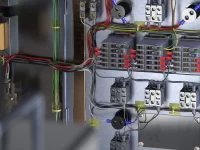Demystifying the Engine of Data Power: Exploring ClickHouse Architecture

In the dynamic landscape of data management, the architecture of a database system serves as its foundation, determining its capabilities, scalability, and performance. Enter ClickHouse Architecture, a marvel of engineering that powers some of the most demanding analytical workloads with unparalleled efficiency and speed. Let’s embark on a journey to unravel the intricacies of ClickHouse Architecture and understand what makes it a powerhouse in the world of data analytics.
Understanding ClickHouse Architecture
At its core, ClickHouse Architecture is designed to handle massive volumes of data and execute complex analytical queries with lightning-fast speed. Leveraging a distributed, columnar storage model, ClickHouse stores data in a highly optimized format that enables efficient query processing and minimal disk I/O.
Key Components of ClickHouse Architecture
- Storage Engine: The storage engine is responsible for storing and managing data on disk. ClickHouse utilizes a columnar storage format, where data is organized and stored in columns rather than rows. This approach maximizes compression ratios and minimizes disk I/O, resulting in faster query execution times.
- Query Processing Engine: The query processing engine is the heart of ClickHouse Architecture, responsible for executing analytical queries with optimal performance. By leveraging vectorized query execution and parallel processing techniques, ClickHouse can process queries in parallel across multiple CPU cores, maximizing throughput and minimizing latency.
- Distributed Architecture: ClickHouse is designed to scale horizontally, enabling organizations to distribute data across multiple nodes and execute queries in parallel. This distributed architecture ensures high availability, fault tolerance, and scalability, making ClickHouse suitable for handling large-scale analytical workloads.
Scalability and Performance
One of the defining features of ClickHouse Architecture is its scalability and performance. Whether handling terabytes or petabytes of data, ClickHouse can seamlessly scale to meet the demands of the workload. By distributing data and processing queries across multiple nodes, ClickHouse achieves impressive throughput and response times, even under heavy query loads.
Real-World Applications
The versatility of ClickHouse Architecture makes it ideal for a wide range of analytical use cases across industries. From real-time analytics and log processing to time-series data analysis and ad-hoc querying, organizations rely on ClickHouse to power their most demanding analytical workloads.
Best Practices
While ClickHouse Architecture offers impressive performance out of the box, it’s essential to follow best practices to optimize its capabilities further. This includes proper data modeling, indexing, and query optimization techniques. By adhering to these best practices, organizations can maximize the efficiency and effectiveness of ClickHouse Architecture in their analytical workflows.
Conclusion: Driving Innovation with ClickHouse Architecture
In conclusion, ClickHouse Architecture is a testament to the power of engineering and innovation in the realm of data management. By leveraging a distributed, columnar storage model and advanced query processing techniques, ClickHouse delivers unmatched scalability, performance, and efficiency for analytical workloads of all sizes. As organizations continue to harness the power of data to drive innovation and growth, ClickHouse Architecture stands ready to meet the challenges of tomorrow’s data-driven world, empowering organizations to unlock new possibilities and achieve their goals with confidence.







